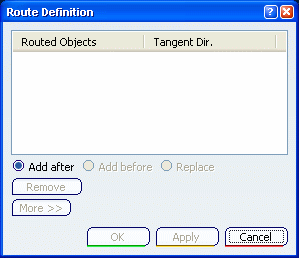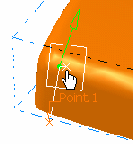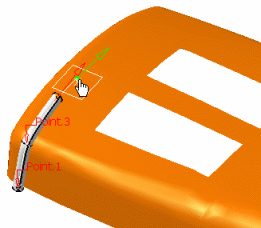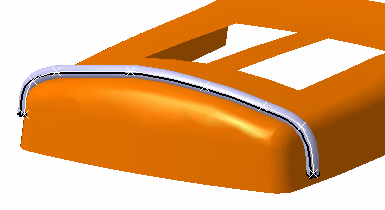You can route the branch on the surface.
Double-click to activate the electrical geometry.
Create the first branch and define branch parameters.
Click Route Definition.
The Route Definition dialog box appears:

Press Ctrl to display a manipulator and the
tangent direction.

The manipulator follows the surface when you move it.
The point is positioned perpendicular to the surface, and is
located by default at a distance from the surface equal to the
segment radius.
A number of options let you manage the offset distance from
the surface. To route branches whilst managing this distance,
see Managing the Offset Distance.
Click successively to create points and define the flexible
curve.

Note: The green arrow shows the tangent direction of the
curve at the point you are about to create and the red arrow
that at the point just created.
Release Ctrl to end the flexible curve definition.

You can modify the route by adding, replacing or removing
points as well as modifying the tangent direction.
Click OK to validate the route definition.
The Route Definition dialog box closes.
The Branch Definition dialog box is displayed afresh.
Click OK to validate when done.